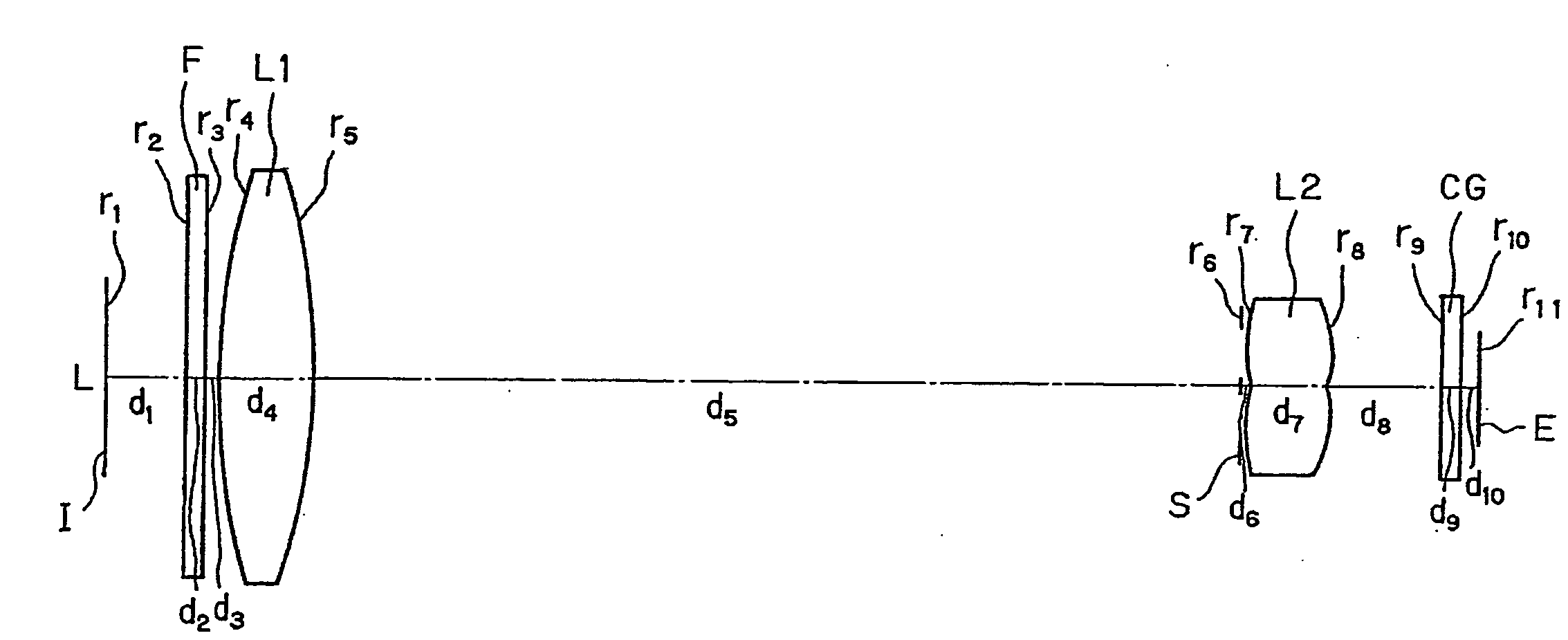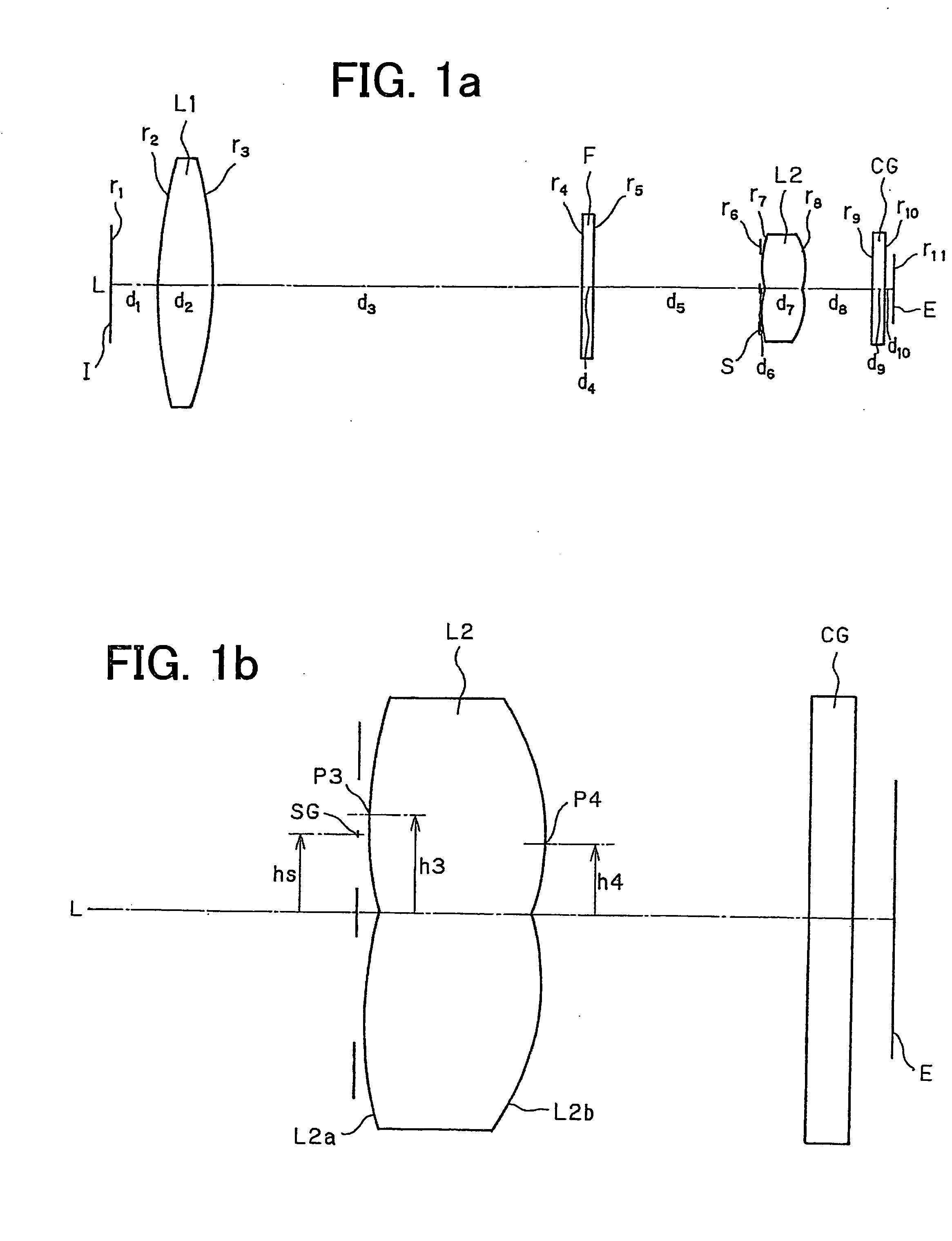Focus detection optical system and imaging apparatus incorporating the same
a technology of optical systems and imaging apparatuses, applied in the field can solve the problems of affecting the accuracy of range-finding, reducing the accuracy of correlative operation, and increasing the size of focus detection optical systems, so as to achieve good enough focus detection and widen the range
- Summary
- Abstract
- Description
- Claims
- Application Information
AI Technical Summary
Benefits of technology
Problems solved by technology
Method used
Image
Examples
example 1
[0174]
Surfacerdndνd1∞3.00228.086 (aspheric)3.521.5254255.783−26.5180.304∞0.701.5163364.145∞32.976∞ (stop)0.1676.5922.741.5254255.788−4.1584.169∞0.701.5231054.4910∞0.62image∞planeaspheric coefficientsecond surfaceK =−3.053quantity of decentrationquantity ofSurfacedecentration61.24671.60281.180
example 2
[0175]
Surfacerdndνd 1∞3.00 2∞0.701.5163364.14 3∞0.50 427.549 (aspheric)3.501.5254255.78 5−27.23034.23 6∞ (stop)0.16 76.5533.201.5831359.38 84.9133.99 9∞0.701.5231054.4910∞0.62image plane∞aspheric coefficientsecond surfaceK =−3.858quantity of decentrationquantity ofSurfacedecentration61.25171.58481.171
example 3
[0176]
Surfacerdndνd 1∞3.00 225.361 (aspheric)3.541.4923657.86 3−23.59022.88 4∞0.701.5163364.14 5∞8.63 6∞ (stop)0.16 710.5962.901.5254255.78 8−4.6476.05 9∞0.701.5231054.4910∞0.62image plane∞aspheric coefficientsecond surfaceK =−4.840quantity of decentrationquantity ofSurfacedecentration61.19171.69981.119
PUM
 Login to View More
Login to View More Abstract
Description
Claims
Application Information
 Login to View More
Login to View More - R&D
- Intellectual Property
- Life Sciences
- Materials
- Tech Scout
- Unparalleled Data Quality
- Higher Quality Content
- 60% Fewer Hallucinations
Browse by: Latest US Patents, China's latest patents, Technical Efficacy Thesaurus, Application Domain, Technology Topic, Popular Technical Reports.
© 2025 PatSnap. All rights reserved.Legal|Privacy policy|Modern Slavery Act Transparency Statement|Sitemap|About US| Contact US: help@patsnap.com



